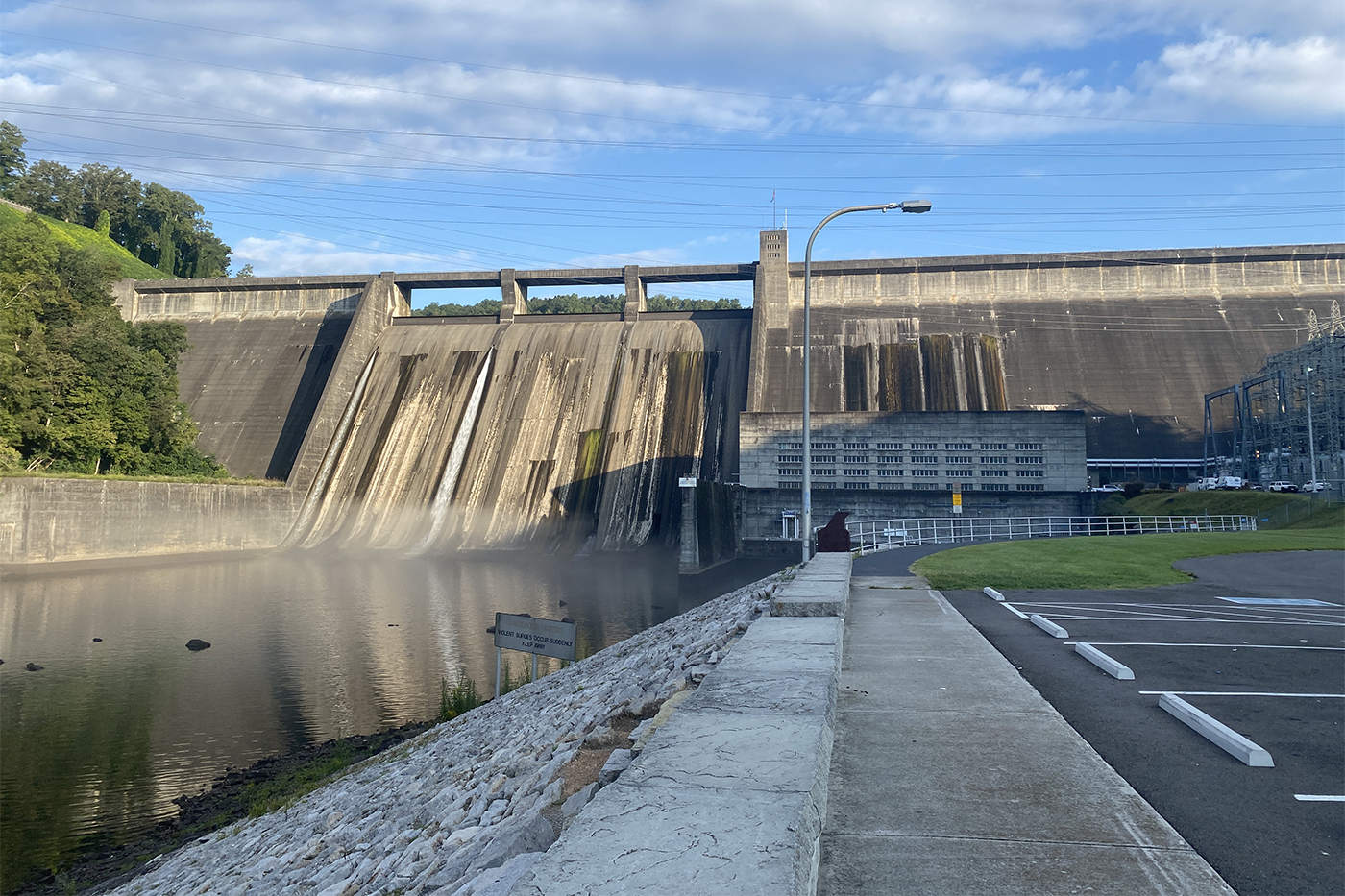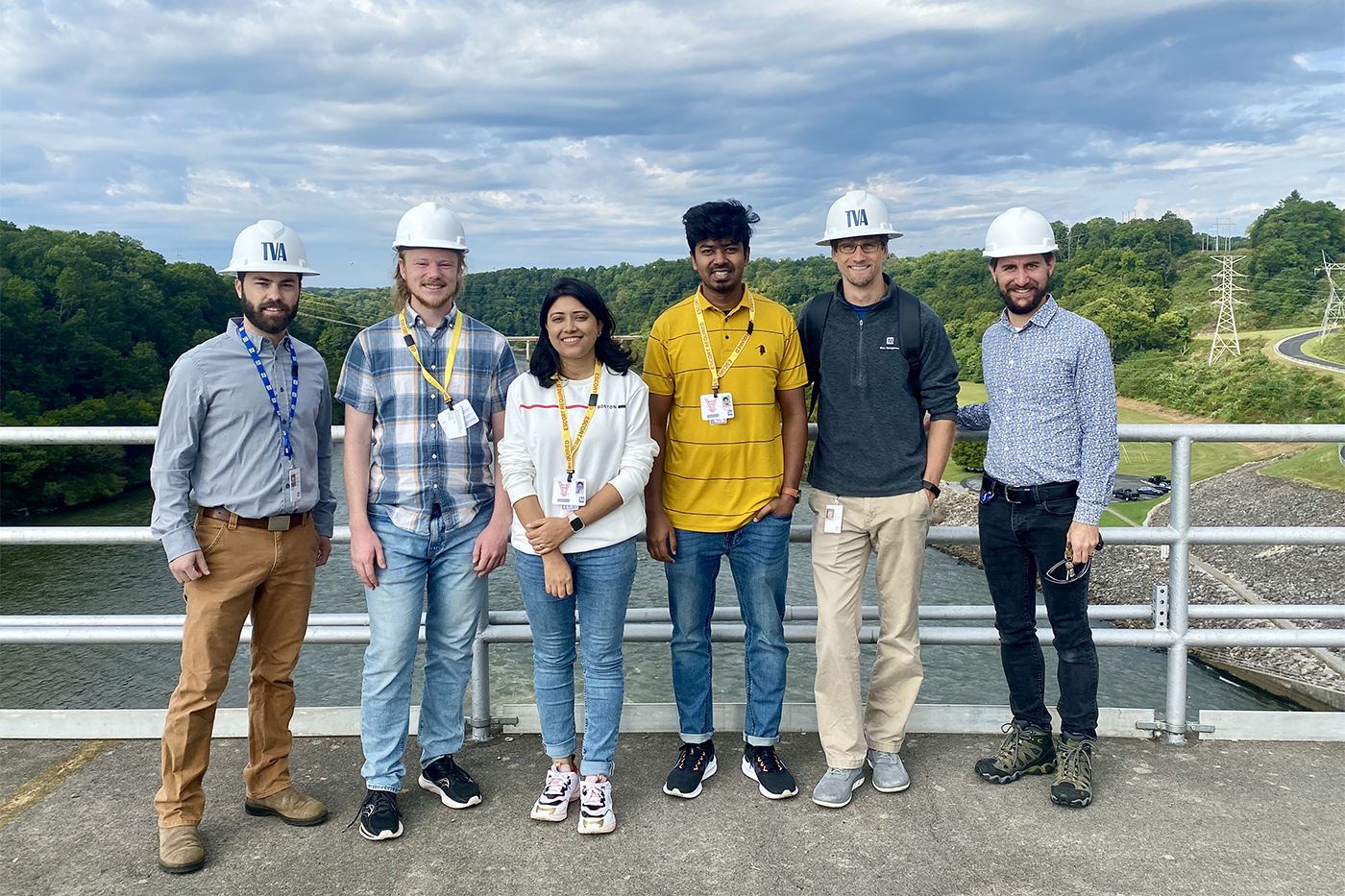Predicting Flooding with AI Models
Following deadly floods in Tennessee, Puja Das, PhD’27, interdisciplinary engineering, is working on a NASA-funded project to explore a better way to predict devastating rainstorms with the help of physics-guided generative AI.
This article originally appeared on Northeastern Global News. It was published by Cynthia McCormick Hibbert. Main photo: Dustin Shadownes of Ashland City Fire Department searches a creek for missing persons along with a cadaver dog after flash floods killed 20 in Waverly, Tenn. Northeastern researchers are working with Tennessee Valley Authority on better rain forecasting models. AP Photo/John Amis
The short-term rain forecast system is broken. Can AI do a better job of predicting deadly floods?
The floods that killed 20 people in Waverly, Tennessee, and the surrounding area came with little warning.
Meteorologists predicted 2 to 3 inches of rain. But 21 inches fell within the course of that August day in 2021, sweeping away cars, houses, businesses, pets and people, including 7-month-old twins.
“They were not prepared at all. As a result, they could not inform people. Entire neighborhoods washed away,” says Puja Das, a fourth-year Ph.D. candidate in interdisciplinary engineering at Northeastern’s Sustainability and Data Sciences Lab.
Now Das is working with river managers and forecasters to explore a better way to predict devastating rainstorms with the help of physics-guided generative AI.
Her research, which is funded by a grant from NASA, recently took her and two Northeastern colleagues to flood-prone Tennessee, where they toured dams and met with officials from the Tennessee Valley Authority.
The country’s largest public power company, the TVA is also responsible for managing the nation’s fifth-largest river system.
“We also had meetings with the River Forecast Center in Knoxville about the models they use and how they decide which forecasts they will use for a particular extreme event,” Das says.
“We asked what they needed from us. They said they need better quality forecasts, because their existing High Resolution Rapid Refresh (HRRR) model is not working very well. They’re looking for better forecasts for their dam operations and river and flood management,” she says.
A broken forecasting model
A physics-based model updated hourly, HRRR was introduced by NOAA less than 10 years ago, in 2014.
But forecasters and civil officials question whether it can keep up with extreme weather events, which climate scientists and NASA say are growing in intensity and frequency.
Even though HRRR “embeds the best possible physics that we know so far,” it often gave “misleading guidance” and failed to predict large precipitation events that cause flash and other dangerous floods, says Auroop Ganguly, Northeastern Distinguished Professor of Civil and Environmental Engineering, principal investigator at the SDS Lab.
 |  |
Northeastern researchers visited Norris and Douglas dams in Tennessee as part of NASA-funded project to see if AI can do a better job predicting intense, short-term rain events than other models. Second from left, Northeastern scientist August Posch with doctoral students Puja Das and Ashis Kumar Pal. Courtesy Photos
“It gave a false sense of complacency,” says Ganguly, who is also director of AI4CaS (AI for Climate and Sustainability) focus area within Northeastern’s Institute for Experiential AI.
Read full story at Northeastern Global News